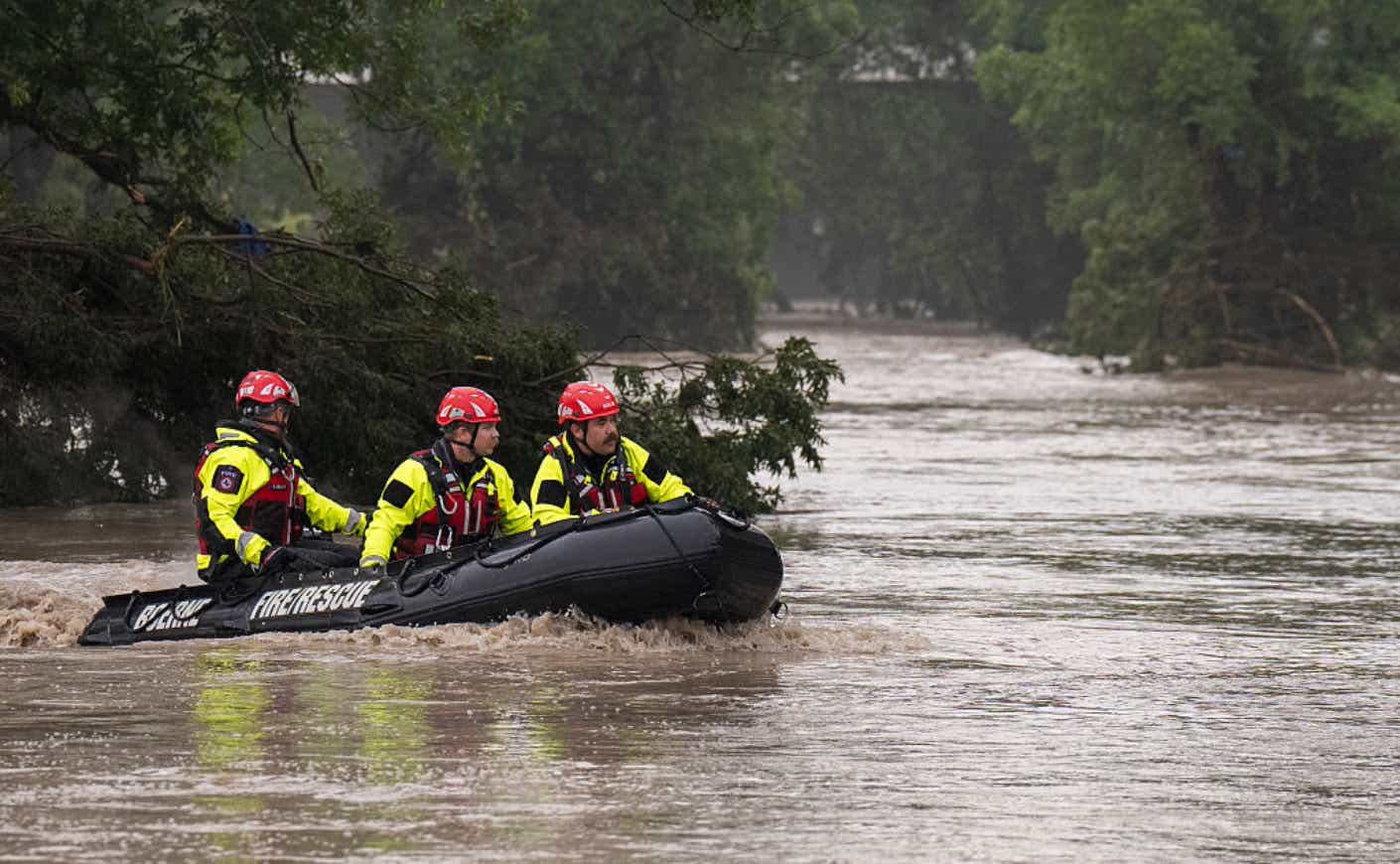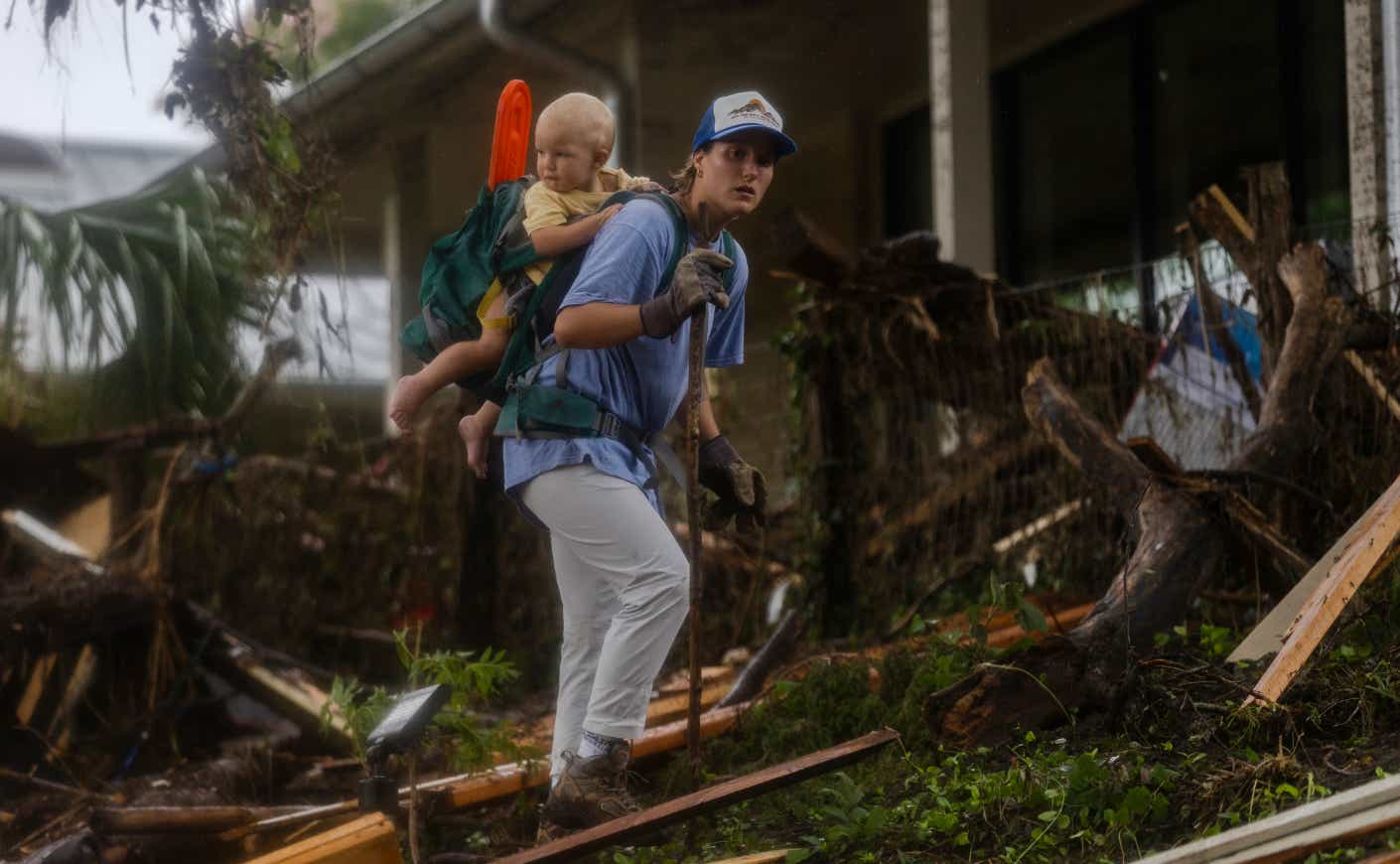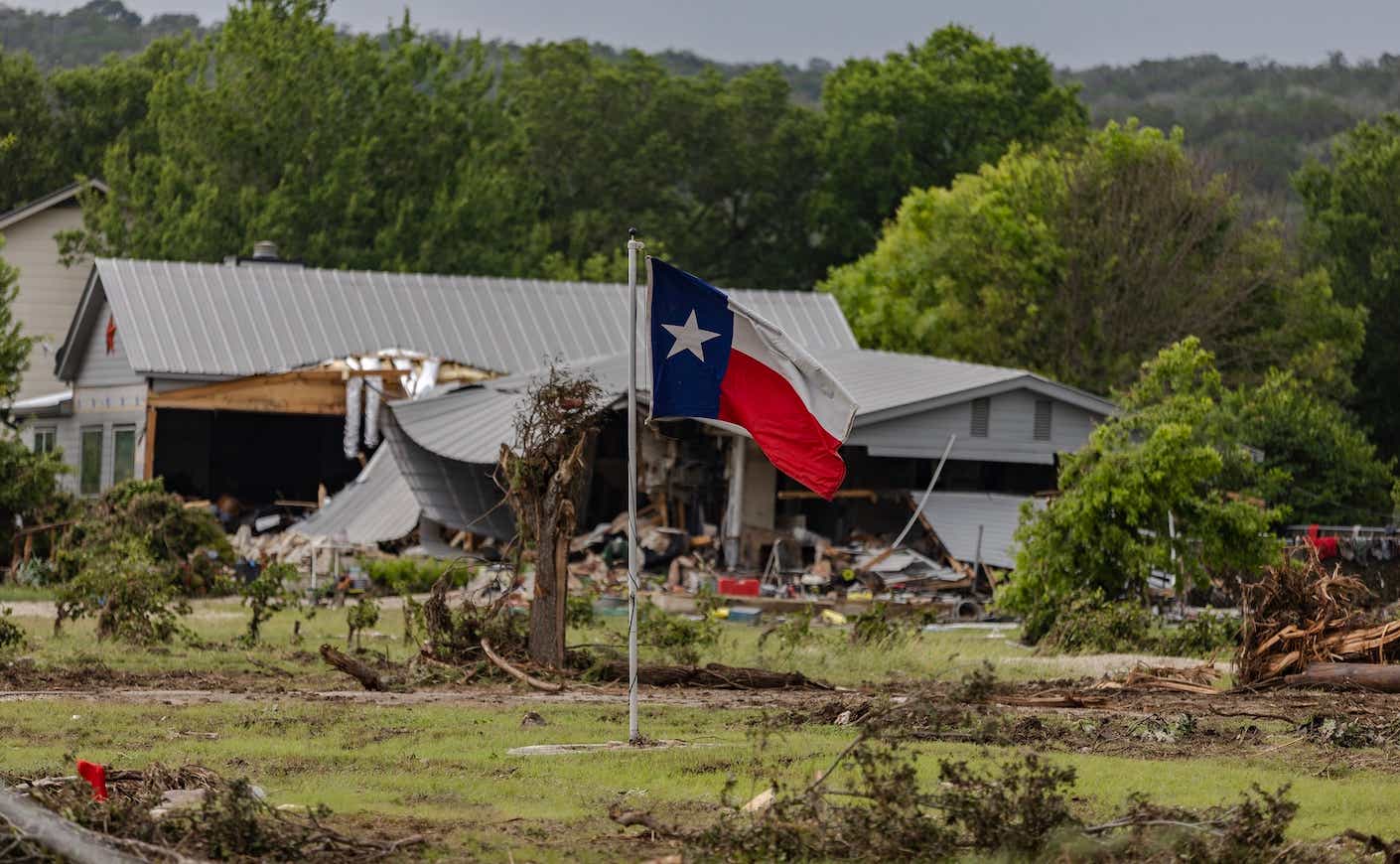The rain came fast, and the river rose even faster.
On Friday, July 4, more than six inches of rain fell in just three hours across the Texas Hill Country. In less than an hour, the Guadalupe River surged 26 feet — sweeping away everything, and everyone, in its path. At least 109 people were killed, including 27 campers and counselors at Camp Mystic, and hundreds more remain missing.
As the states reel from one of the deadliest floods in recent memory, one question looms large: Was this a freak act of nature, or a predictable disaster fueled by climate change and years of ignored warnings?
To find out, we spoke with experts — including those at Texas A&M University, home to one of the country’s leading climate and atmospheric science programs.
To what extent did climate change contribute to the severity of the recent Texas floods?
Experts agree: The deadly floods in the Texas Hill Country were fueled by climate change. A warmer atmosphere holds more moisture, which means today’s storms are capable of dumping far more rain than they used to. On July 4, up to 12 inches of rain fell in Central Texas in a matter of hours, according to National Weather Service radar estimates.
And there’s solid research to back that up. A 2024 report published by Texas A&M University found that extreme rainfall events in the state have already increased by about 10 percent due to climate change. That number could double in the coming decades, reaching a 20 percent increase compared to a century ago.
Last week’s rainfall was especially intense because the remnants of Tropical Storm Barry swept over Texas after making landfall in Mexico. But even that storm reflects a larger trend. As the planet warms, tropical systems are producing more rainfall. That’s because the oceans — which have absorbed most of the excess heat trapped by human activity — are getting warmer. Warmer oceans fuel stronger storms, and when you pair that with hotter air that can carry more moisture, the result is bigger, wetter systems with greater potential for flooding. We saw this on full display last year, when Hurricane Helene brought catastrophic floods to Appalachia.
But few places are as vulnerable as the Texas Hill Country, which is nicknamed “Flash Flood Alley.” (Having grown up there, I remember barely blinking an eye when the waters rose.) For those unfamiliar with the terrain, the risk lies in its rugged geography. Saravanan Ramalingam, Ph.D., head of the Atmospheric Science Department at Texas A&M, explains that the steep limestone hills and thin layer of soil create a funneling effect. Instead of soaking in, rainwater surges downhill fast, turning a downpour into a dangerous flash flood.

And this isn’t just a Texas problem. Across the U.S., storms are getting stronger. The most intense downpours are expected to become even more extreme, heightening the risk of flash floods well beyond the Hill Country. According to the National Climate Assessment, more than a third of the $230 billion in inland flood damage nationwide between 1988 and 2021 can be directly linked to human-caused climate change.
Could Texas have been better prepared?
As the death toll from the catastrophic flooding in Texas climbs, questions are mounting about whether local officials in Kerr County — one of the hardest-hit areas — did enough to protect residents. After all, this isn’t the first time such a tragedy has struck the region. In July 1987, heavy rains triggered a flash flood of the same river. It forced the evacuation of another Christian camp near the rural town of Comfort, where 10 teenagers were swept away and killed.
Unlike neighboring counties like Guadalupe and Comal, which installed flood sirens nearly a decade ago, Kerrville had no outdoor warning system in place. Just down the road, New Braunfels regularly tests its sirens — a standard practice in a region known for flash floods. But in Kerr County, officials admitted over the weekend that no such system exists.
It’s not because they didn’t have the chance. After deadly floods tore through southeast Texas in 2016, killing dozens and destroying homes, President Barack Obama declared a major disaster. That declaration unlocked over $100 million in FEMA funding to help Texas communities recover — and prepare for the next one.
Kerr County requested $1 million to build a flood warning system. But some local officials pushed back on the cost. “I think this whole thing is a little extravagant for Kerr County,” then-Commissioner Buster Baldwin said at the time. “I see the word sirens and all that stuff in here.”
Efforts to address the problem at the state level have also made little progress. Texas House Bill 13, introduced in the most recent legislative session, aimed to create a statewide plan for outdoor sirens and offer funding to help rural communities install them. But the bill died in the Legislature, dismissed by critics as too expensive, even as the need for warning systems became more urgent.
Now, one painful question lingers: Could this alert system really have made a difference? On Friday morning, more than six inches of rain fell in just three hours, and the Guadalupe River surged 26 feet in just 45 minutes.
And the state saw the storm coming. In the 48 hours preceding the flood, officials activated emergency response plans and pre-positioned resources in the region. But critical alerts came too late for many. The National Weather Service issued a flash flood warning at 1:14 a.m., followed by an upgraded flash flood emergency at 4:03 a.m. — but by then, most people were likely asleep, unaware of the danger rising just outside their doors.
Still, some argue that even if the alerts went out, many people may not have received them — especially in rural areas where cell service is spotty. Since receiving these alerts isn’t mandatory, some residents may have opted out altogether. And with so few people using radios today — especially NOAA weather radios — critical warnings may have simply been missed.
“You can have radios or get alerts on your phone, sure — but most people were either asleep or just not paying attention,” says Timothy Logan, Ph.D., a professor at Texas A&M’s Department of Atmospheric Sciences. “It’s not that the warnings weren’t issued. It’s that people didn’t receive them in time. Your devices have to be on. You have to be paying attention — and that’s a tough ask in the middle of the night.”
Did Trump-era budget cuts make things worse?
The deadly Texas floods are once again drawing attention to staffing cuts made early in Trump's second term — particularly at critical weather and climate agencies. The NOAA lost hundreds of employees during that period, including key roles within the National Weather Service. According to The Hill, the Austin/San Antonio Weather Service office lost its warning coordination meteorologist to a Trump administration-issued buyout in April. (Around the same time, its science operations officer — the person responsible for implementing new forecasting technology — also retired.)
Some scientists argue the lack of preparation wasn’t just bad luck, but the result of these cuts — and years of broader disinvestment.

“We witnessed with this particular event that our current federal government and the Governor of Texas were completely unprepared to deal with it properly,” said Michael Mann, a professor of earth and environmental science at the University of Pennsylvania. “There are several reasons — including the massive layoffs of governmental first responders by the current administration and similar policies by the Republican Governor of Texas, as well as the defunding of federal weather forecasters and flood managers. Adding insult to injury is the fact that both the administration and the governor have actively denied the threat of climate change and opposed policies to address it.”
Still, some experts say that while staffing losses may have affected internal communication, the core forecasting operations held up.
“When it comes to the official products issued by the National Weather Service — the watches, the warnings — it’s clear to me that the vacant positions didn’t affect that part of the process,” says Erik R. Nielsen, an instructional assistant professor in the Department of Atmospheric Sciences at Texas A&M University. “The alerts went out as expected, and the office even brought in additional staff to ensure coverage. So operationally, things were functioning.”
But, he added, what’s harder to evaluate is whether the “background communication between civil authorities and the office was the same as it would've been had those positions been in place.”
Despite the finger-pointing, many climate scientists say forecasters did the best they could under difficult conditions. Dr. Nielsen notes that the warnings were about as timely and accurate as possible, given the real-time data available. Forecasting extreme rainfall and flash flooding more than a few hours in advance remains notoriously difficult due to both scientific and technological limitations.
“Hyperlocal forecasting is possible, but it depends on hyperlocal data — and we just don’t have that level of detailed observation yet,” he says. “Without it, even the best models, whether traditional or AI-driven, struggle to deliver neighborhood-level accuracy. The same goes for hydrologic models. They’re designed to track how rivers and creeks respond to rain, but even small errors in pinpointing where the heaviest rain falls can lead to major differences in flood predictions.”
Experts agree that more investment is needed in hyperlocal weather forecasting. But that kind of progress might not be in the cards. Trump’s latest budget proposal calls for eliminating funding for the agency’s climate laboratories and regional climate data centers. It also aims to zero out support for NOAA’s weather research program, including research on tornadoes and severe storms.
“I’m not sure we have the capability to predict things precisely [enough] yet [so that] sirens go off in just the right areas,” Dr. Ramalingam says. “We still need more funding for research. Unfortunately, things are moving in the opposite direction of where I’d hope — and that’s where we are right now.”









